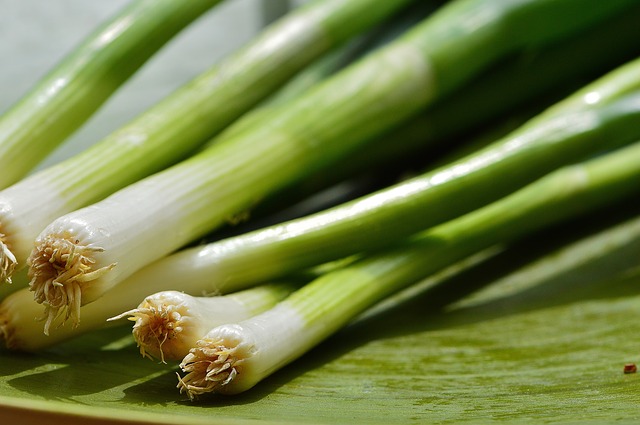
Spring onions are a popular choice for cooks from different cultures. It brings a great crunchy texture and subtle onion flavor to brighten any dish you have in mind.
Spring onions provide a healthy, tasty, fresh flavor to your food. Whether it’s cooking it into an omelet or freshly chopped as a garnish, spring onions are a must-have for the kitchen.
But If you’re new to cooking, you may ask, can you freeze spring onions?
You can freeze spring onions for up to three months without sacrificing flavor. Have a bag of frozen spring onions ready for any dish you wish to serve!
Most home cooks use frozen spring onions in cooked dishes to disguise the chewy texture. You can add them to virtually any dish – soups, stews, sauces, salsas, dips, sizzlers, etc. You can even add them to butter or cream cheese to create more flavorful spreads, to goat cheese for pudding, or as pancakes.
Before anything else, you must know how to choose your spring onion. Knowing how to look for the freshest ones drastically improves flavor, texture, and storage time.
The spring onions you are looking for should be glossy, bright green, and firm. Stay away from yellowish and limp stalks, as those are likely to go bad soon.
How to Freeze Spring Onions?
Properly storing your spring onion is the best way to make the most of your money. When you live in areas where scallions aren’t as common, knowing what to use, how to store them, and for how long is especially helpful. The entire spring onion itself is usable – from the white bulb to the bright green stalk, so there is minimal waste.
The preparation process is quite simple, so if you have any left-overs or you naturally want to be ready for any occasion, follow these four easy steps:
1. Wash and Trim
The first step in handling any spring onions is to wash them thoroughly. During the harvesting and processing of the plant, soil often gets mixed in. Rinsing will help remove much of the bacteria on the surface that remains.
Trim off the ends that look wilted. You can completely trim the roots off, or if you chop the roots a bit above the bulb, you can save them for re-planting later. You may freeze the onion whole or chop it into even sections now for convenience later.
If you are going to chop them, do so in three sections: the white bulb, pale green stalk, and dark green stalk. The white section has the most intense onion flavor and is used to intensify soups. The pale green bit is where the bulb sections off into leaves and is used to garnish dishes.
The dark green bit has the mildest flavor and the best texture and is used to spice up stews or dips, but you can also grill it on its own as a side dish.
2. Drying off
Spread the whole (or chopped) spring onions onto a tray, plate, or kitchen towel. Pat them dry, then leave them to air dry for about 30 minutes to an hour, depending on the internal temperature of your house.
Removing excess water helps prevent ice crystals from forming and freezing them into clumps.
You may now chop the pale green stalk of the onion into smaller even rings. The dryness of the chopped spring onions will also help them separate individually later.
3. Contain them!
You may do this step after “step four: freezing” if you’d like to follow the flash freezing method.
You may now put your spring onions into your container of choice – ziplock bags or whatever have you. If you choose a freezer-safe ziplock bag, squeeze out as much air as you can, then seal.
Double or triple-bag them as well to prevent the onion smell from perforating and soaking your freezer. Make sure that you label them with the date of and the date three months later.
To streamline your cooking, you can even put the chopped bits into a dry, empty bottle such as a cleaned juice bottle or mineral water bottle.
4. Freezer Time
You may now put your spring onions into the freezer. You can store them for up to three months, and the date you previously labeled can help you plan for meals to use them up.
To flash freeze the onions, place them on a tray with wax paper or parchment paper and freeze in a dry, crisp spot in your freezer for anywhere from 15-30 minutes. Take them out and promptly transfer them to a container and return them to the freezer.
The onions thaw as quickly as five minutes, so you better rush!
5. Bonus Step
If you have chopped your spring onions, keep them in the freezer overnight and shake them up in the morning. Doing this will help separate the rings into individual pieces and avoid clumps.
How to Thaw Spring Onions?
When using spring onions for cooking dishes, such as fried rice, it’s a simple matter of grabbing a handful and tossing it in. The heat from the pan will make quick work of the frozen goods and incorporate its flavor within a few stirs.
You may even add spring onions in cubes using the tips mentioned below.
However, when using them as a garnish, you may need to put them in a bowl and defrost them in the fridge for a few minutes. It shouldn’t take too long either. With the bonus step from the preparation stage, it should take even less time to defrost. It’s because the individual rings have more surface area for heat to penetrate.
Other Ways to Freeze Spring Onions
Chefs and home cooks from all over the internet have divulged their unique ways of freezing their spring onions. Here are a few:
Ice cubes
Put the chopped spring onions in a muffin or ice cube tray, top off with water and freeze them. You can take a few cubes and add them to any soup while cooking later. They will thaw as they simmer in heat.
Olive oil
Sautee the onions in olive oil and freeze them like ice cubes. The olive oil will retain the flavor of the onions and unify your chosen dish.
An alternate version of this would be sauteeing onions, garlic, celery, and parsley in olive oil. Puree the mix in a food processor and freeze the mixture like ice cubes. You can add these flavorful cubes to mashed potatoes, fried rice, or meat patties.
For How Long Can Spring Onions Be Frozen?
You can keep spring onions in the freezer for up to two months without losing flavor. At the three-month mark, the spring onion will lose its crunchiness and will become chewier.
You can add them to virtually any dish, however, so you should be using them more often. Use up raw onions within a few weeks for the best flavor, and the cooked ones within a few months.
Benefits of Spring Onions
Did you know that scallions are healthy and nutritious for the body? It contains sulfur compounds that protect the body from cancer, keep your blood pressure stable, and blood sugar low. It also has loads of immune-boosting Vitamin C that builds your white blood cell count and helps fight off infections. Its fibers help your digestive system work with ease and provide a full feeling after eating, thus promoting weight loss.
Scallions are also known to lower blood cholesterol and, in turn, mitigate risks for heart problems. The vegetable can also improve your skin health. Vitamin C in its composition help creates collagen in the body, thus maintaining skin elasticity and prevents wrinkles.
When eating spring onions regularly, they may slow and inhibit the degeneration of your eyes. Scallions have carotenoids and Vitamin A that help prevent loss of eyesight.
Can You Refreeze Spring Onions?
It’s not a good idea to refreeze spring onions once it has thawed out already, and you should toss out any that have been thawing for 25 hours. However, if you’ve cooked them into a dish, you can freeze the leftovers for another meal.
Freeze-ability of Spring Onions
Spring onions are bright when fresh, refreshingly crunchy with a subtle onion taste. When the onions are frozen, they retain their flavor but lose their crunchy texture.
The pale green stalk often becomes chewy and mushy because of its water content, while the dark green ends become tough. But it’s not much of a loss when you’re cooking as they deflate in heat.
I hope this helps. If you want to learn more about freezing, feel free to visit this page.
